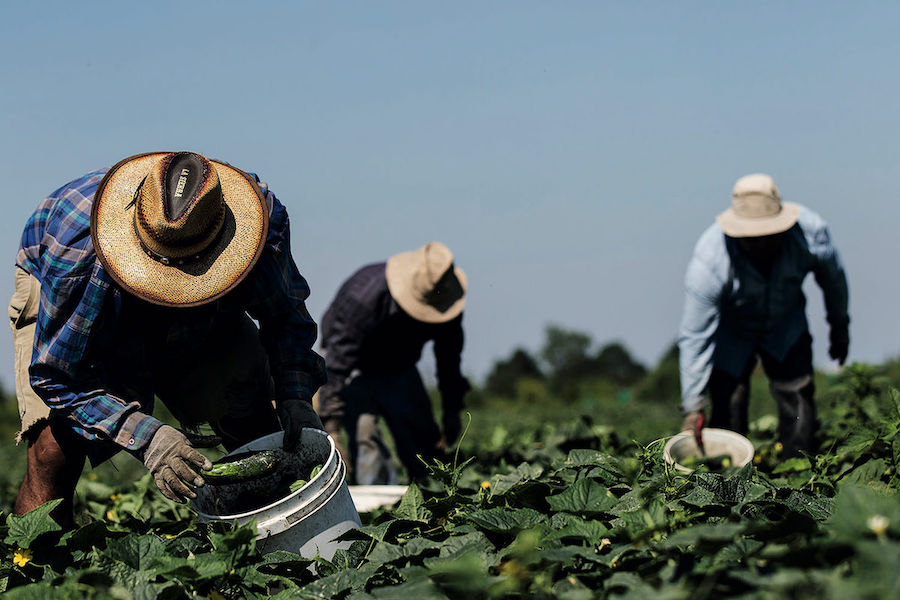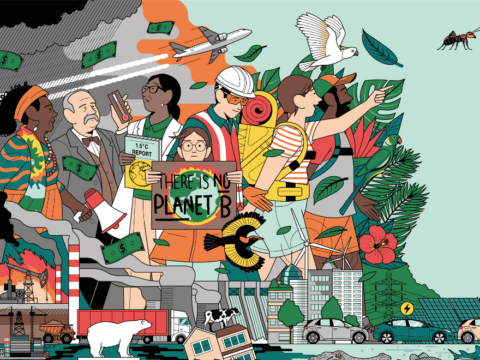What feels like a far-off, dystopian future has already begun: climate refugees fleeing the effects of increasingly harsh and temperamental weather have arrived in Canada. They include Mexican migrants escaping drought, Filipino refugees running from typhoons and hurricanes, and Bangladeshi residents evading flooding — and they chose one of the world’s coldest countries for a reason.
According to the UNHCR, the United Nations’ refugee agency, an average of 21.5 million people are displaced each year by weather-related events, and the Institute for Economics and Peace expects that number could rise to as many as 1.2 billion by 2050. It’s hard to know exactly how many of them have already ended up in Canada, since there’s no official data on climate refugees, but Syed Hussan, the executive director of the Toronto-based Migrant Workers Alliance for Change, estimates the number to be somewhere in the tens of thousands.
Canada may advertise itself as a safe haven, but it’s not prepared for this influx of people — nor has it formally acknowledged that climate refugees even exist. Currently, our government defines a refugee as a person who is outside of their home country and unable to return because of “a well-founded fear of persecution based on race, religion, political opinion, nationality [or] being part of a social group, such as women or people of a particular sexual orientation.”
Failing to include climate migrants as part of the official refugee definition means that these people aren’t recognized under Canada’s immigration laws, and many of their rights — for example, the right to health care — are precarious and difficult to access.
More on Broadview:
- Why a carbon-free world isn’t possible with capitalism
- How reading the Bible differently changed the way theologian Brian McLaren wrote about the climate crisis
- Saleemul Huq on why the new ‘loss and damage’ fund for climate change victims must start now
Hussan says the result is that many existing climate refugees end up in the temporary foreign worker (TFW) program, which brings foreigners to Canada to do difficult, low-paid work, like fruit picking, meat packing or caring for the elderly. The irony is that Canada is a major contributor to the conditions that lead to climate displacement, then profits from it through the migrants who end up in the program.
The human rights abuses in the TFW program have been well documented: Mexican farmworkers have suffered burns and rashes from being forced to handle pesticides without protective equipment; allegations of abuse, assault and racism are countless. Last fall, Tomoya Obokata, the UN special rapporteur on contemporary forms of slavery, went so far as to call the program a “breeding ground” for exploitation and slavery.
Without the same rights as Canadian citizens or permanent residents, climate migrants are at the mercy of a system that has been recognized as broken for a long time. When I asked Senator Ratna Omidvar how Canada can ensure that they don’t fall through the cracks, she told me, “We need to up our game in treating them fairly,” adding that we need a system to ensure their rights are enforced.
“Many of them do not know that they have a right to decent housing. Some of them don’t even know that they are covered by health insurance. They have very little idea and very little agency in terms of speaking out for themselves in the workplace because they fear reprisal.”
Canada is a land of immigrants and Indigenous Peoples and has a global reputation for treating its citizens with respect, fairness and dignity. This crisis is only expected to get worse. We need to do a lot better.
UPDATE: An earlier version of this story stated that the Institute for Economics and Peace estimated the number of climate refugees would reach 1.2 billion by 2050. It was been updated to better reflect this estimate as a hypothetical.
***
Alexandra Shimo is a writer and journalist in Toronto.
This article first appeared in Broadview’s April/May 2024 issue with the title “Canada’s Cold Reality.”















